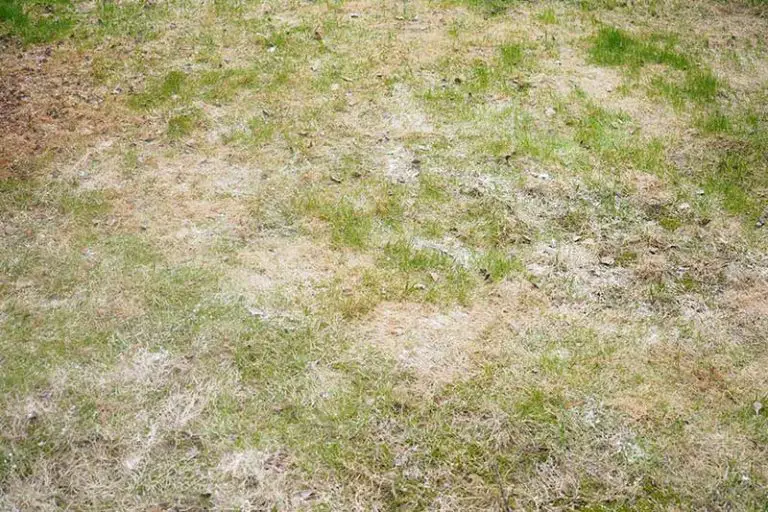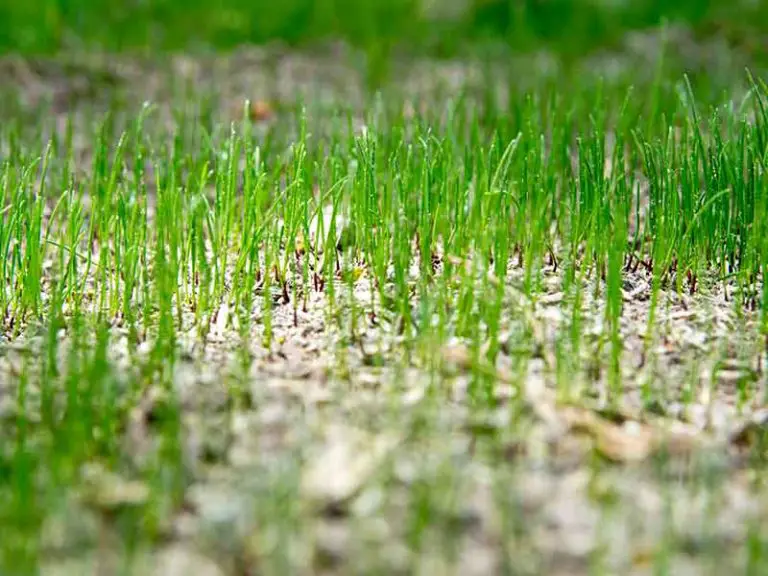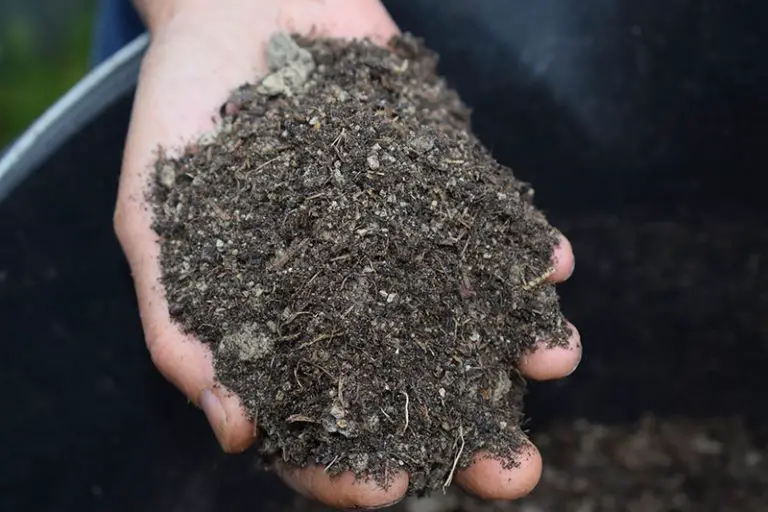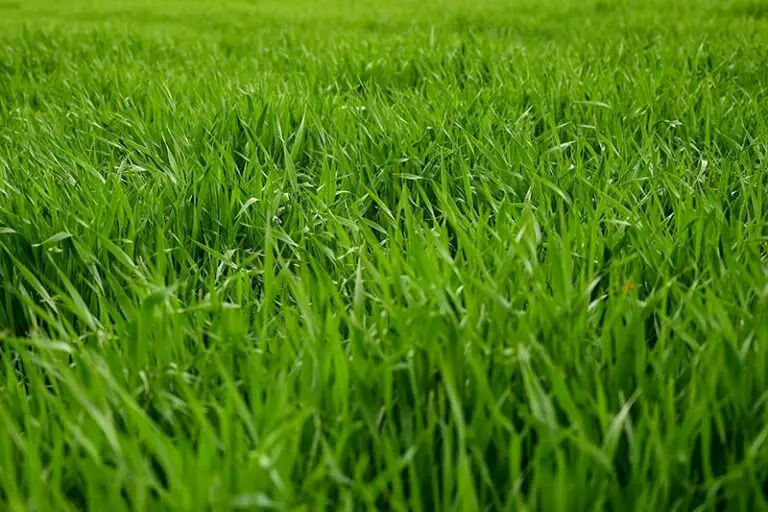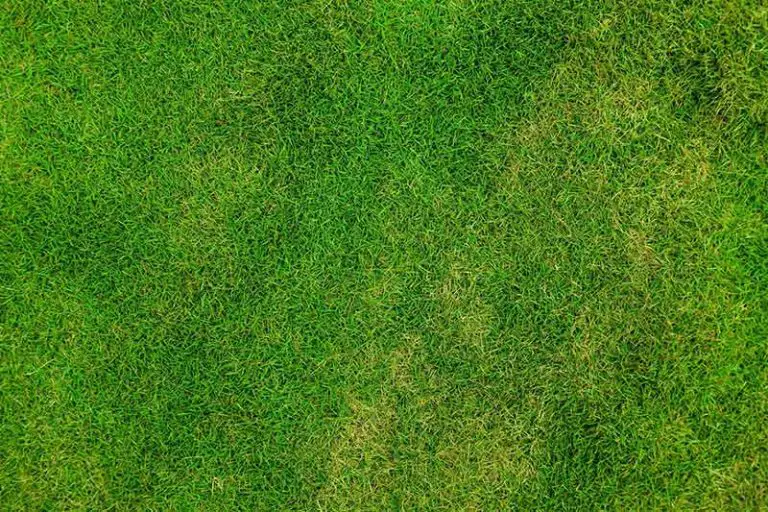Choose the Best Grass for Your Lawn: Bermuda vs. Tall Fescue
Bermuda grass and tall fescue are two different types of turfgrasses that grow best under different conditions. There are a range of characteristics that you need to consider when choosing which type of grass would be best for your lawn.
Bermuda grass is a warm-season grass that grows best in warmer temperatures and full sun. It is therefore best suited for lawns in the southern and warmer transitional regions of the US. Tall fescue, on the other hand, is a cool-season grass that thrives in cooler temperatures and wet soil. It is a preferable choice for northern lawns and those in the cooler transitional regions.
What is Bermuda Grass?
Bermuda grass is a warm-season grass type that is a popular choice in the southern and transitional regions of the US. This grass has fine, dark green blades that form a dense, lush turf. Its period of most active growth is from the late spring throughout the summer.
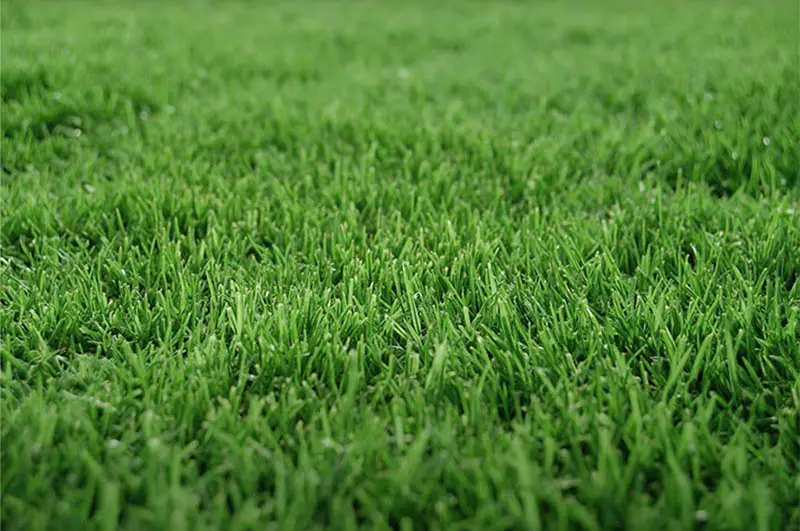
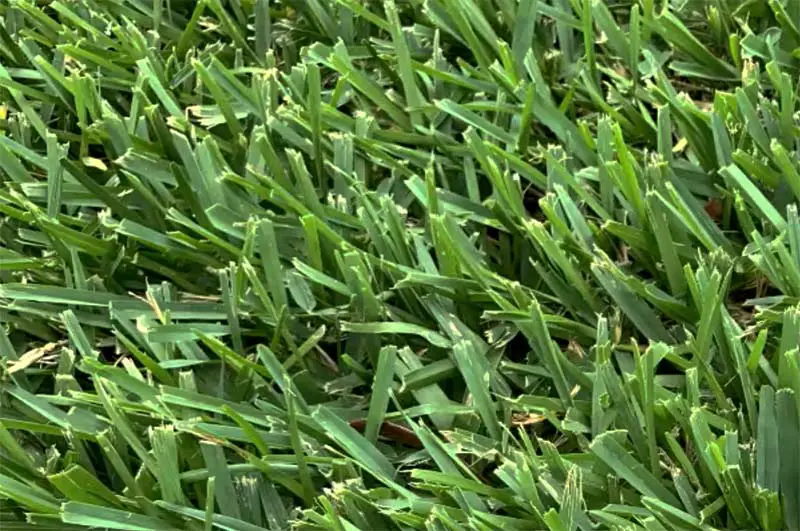
Bermuda grass will thrive in lawns that receive direct sunlight throughout the day and have well-draining soils. With that said, this grass is well-adapted to a range of conditions, having excellent hardiness due to its extensive root system and aggressive growth habit. It is traffic resistant, drought tolerant, and resistant to weed growth. However, Bermuda grass is sensitive to low temperatures, prone to thatch, and may take over nearby flower beds.
What is Tall Fescue?
Tall fescue is a cool-season grass type that grows in the northern and transition zones of the US. This grass has narrow dark green blades. Tall fescue grows most actively during the spring and fall.
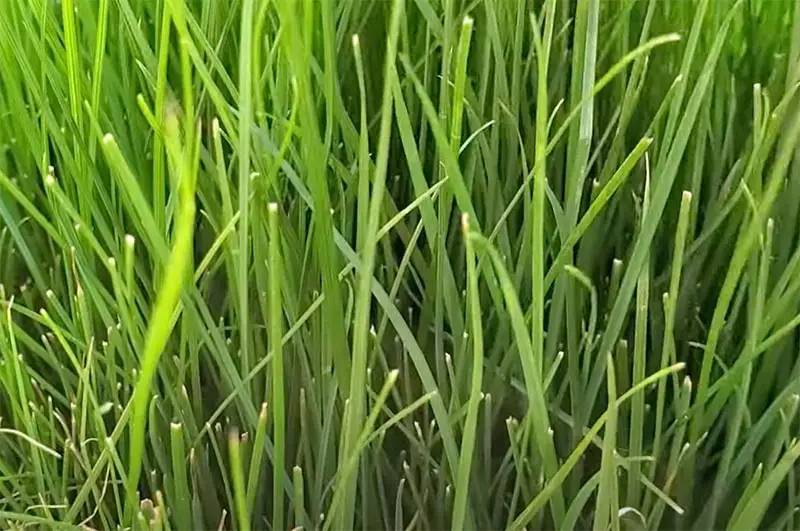
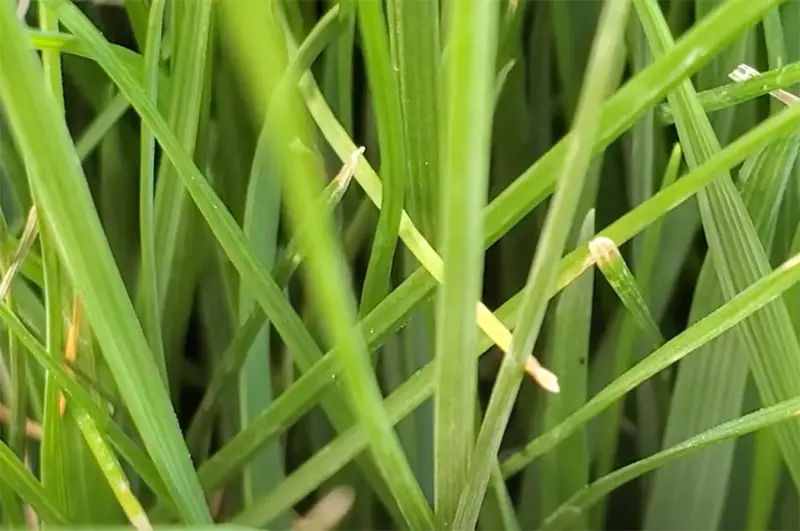
Tall fescue has an extensive root system, making it drought tolerant and able to survive in overly dry conditions. It is also tolerant to shade and possesses excellent disease resistance. The characteristics of this grass make it ideal for transition regions; it offers better heat tolerance than other cool-season grass, while having better cold tolerance than other warm-season grasses. As tall fescue is a bunch-forming grass, it has a limited ability for self-repair and spread to bare spots of soil.
Comparing Bermuda Grass vs Tall Fescue
1. Appearance
Bermuda grass and tall fescue grass look similar in appearance, both having coarse, dark green blades.
Bermuda Grass
Bermuda grass has coarse, dark green blades. It also develops stolons; these are above-ground roots that allow the grass to spread. You may be able to see small hairs where the leaf blade of the Bermuda grass meets the leaf stem. The blades of Bermuda grass can grow to a maximum height of 2 inches.
Tall Fescue
Tall fescue also has coarse blades that are medium to dark green in color. As it is a bunch-forming grass, tall fescue grows in clumps. Compared to Bermuda grass, tall fescue typically has wider blades. These blades can grow to be up to 3 to 4 feet tall without mowing.
2. Growing Seasons
Bermuda grass is a warm-season grass type while tall fescue is a cool-season grass type. This means that the two grasses have different growing seasons.
Bermuda Grass
As Bermuda grass is a warm-season grass, it grows most actively in the late spring throughout the summer, i.e. from March to September. Bermuda grass will thrive when temperatures are within the range of 75°F and 95°F. When temperatures start to drop in the fall, the growth of Bermuda grass will slow down. It will eventually turn brown and enter a state of dormancy in the winter months.
Tall Fescue
Being a cool-season grass, tall fescue grows most actively in the spring and fall, when temperatures range between 55°F and 75°F. When temperatures rise above this range in the summer, the growth of tall fescue slows down. However, unlike Bermuda grass, tall fescue has the ability to both stay green over the summer and green throughout the winter months with the right care.
3. Preferred Soil Conditions
Bermuda grass and tall fescue differ in their preferred soil conditions. While Bermuda grass prefers dry, sandy soils, tall fescue will do better in rich, clay-heavy soils.
Bermuda Grass
Bermuda grass has a preference for dry, sandy soils. Sandy soils are ideal for Bermuda grass as they are well-draining, a growing condition which this grass prefers. If your soil is clay-heavy or tends to hold onto water, Bermuda grass is not a recommended grass type.
Tall Fescue
Tall fescue is a highly adaptable grass type, and will be able to tolerate most soil types, including poor quality, dry, sandy soil. With that said, this grass will thrive in rich, clay-heavy soils that receive a lot of water from rainfall or irrigation. It’s a great choice for areas of the lawn that tend to hold onto moisture.
4. Fertilization Requirements
Generally speaking, Bermuda grass and tall fescue both require the same amount of nitrogen fertilizer each season. However, the time of year that you fertilize each grass type differs; the best time to fertilize a lawn is during its period of most active growth, which varies between these two grass types.
Bermuda Grass
The best time to fertilize Bermuda grass is during the late spring to the early fall; you should fertilize every 4 to 6 weeks during this period of time. Fertilization is unnecessary at any other time of year, as the Bermuda grass stops actively growing beyond the fall.
Tall Fescue
The best times to fertilize tall fescue grass are during the spring and fall. You should avoid fertilizing over the summer; the grass won’t benefit from the extra nutrients at this time of year, and it may leave your lawn more susceptible to disease. With that said, you can add a chelated iron supplement during the summer to help the grass maintain a deep green color.
5. Watering Requirements
Both Bermuda grass and tall fescue require 1 inch of water per week, either through irrigation or rainfall.
Bermuda Grass
You’ll only need to water Bermuda grass once per week during its period of most active growth. You should water Bermuda grass to a depth of six inches to encourage the development of deep root systems. After a heavy rainfall, avoid watering Bermuda to reduce the risk of disease.
Tall Fescue
During the spring and fall, you’ll need to add 1 inch of water per week to tall fescue grass. When temperatures rise in the summer, you may need to add up to 2 inches of water per week to keep tall fescue green.
6. Mowing Requirements
In their active growth periods, Bermuda grass will require more frequent mowing than tall fescue. Bermuda grass should also be maintained at a lower mowing height than tall fescue.
Bermuda Grass
The best height to cut Bermuda grass is 2 inches, with its ideal range being between 1.5 and 2.5 inches. To maintain Bermuda grass at this height, it will be necessary to mow at least once per week; you may need to mow more often in the summer when the grass is growing most actively. If you want a shorter lawn, Bermuda grass is the best choice.
Tall Fescue
For tall fescue, the best height to mow is 3 inches, or somewhere in the range of 2 to 3.5 inches. It’s better to let tall fescue grow to the taller end of this range in periods of hot weather; this will help the grass’ roots to retain moisture and stay cool, preventing the grass from damage in high heat. You should only need to mow once per week during the grass’ periods of most active growth in the late spring and early fall.
7. Traffic Tolerance
Bermuda grass and tall fescue are two of the best grasses for high-traffic areas. Both grasses have excellent hardiness and will withstand moderate to heavy traffic from people, pets, or cars.
Bermuda Grass
Bermuda grass has a high tolerance for traffic and will recover quickly when traffic damage does occur. It has a rapid and aggressive growth habit, allowing it to spread to fill bare spots of soil with ease. Take note that Bermuda grass will be more susceptible to traffic damage when the turf is wet; any amount of moisture vastly reduces this grass’ durability against foot traffic.
Tall Fescue
Tall fescue has an outstanding tolerance for traffic and shade. This grass has an expansive root network, making the grass highly resistant to heavy usage. However, as this grass is a bunch-forming grass type, it has a limited capacity to self-repair. It will take longer for tall fescue to spread and fill bare spots compared to Bermuda grass.
8. Drought Tolerance
Bermuda grass is much more drought tolerant than tall fescue.
Bermuda Grass
Bermuda grass is a highly drought tolerant grass, being able to survive in temperatures of up to 95°F. During extended periods of drought, Bermuda grass will turn brown and enter a state of dormancy. However, it will green back up quickly when conditions are favorable for its growth.
Tall Fescue
Tall fescue has poor drought tolerance, and won’t perform well in periods of high heat or drought. Lawns with tall fescue tend to thin out after dry summers, meaning overseeding is often necessary in the fall. Extended periods of drought may kill this grass and therefore meticulous watering is necessary over dry seasons.
9. Shade Tolerance
Bermuda grass has a low tolerance to shade, while tall fescue is highly tolerant to shade.
Bermuda Grass
Bermuda grass requires full sunlight in order to thrive. It will therefore not grow well in areas with partial or full shade. In parts of the lawn that are in partial shade for more than 4 hours per day, Bermuda grass will appear thin. It won’t grow at all in areas of full shade.
Tall Fescue
Tall fescue can grow well in areas with partial shade. In parts of the lawn with dappled sunlight, tall fescue can grow just as well as the parts in full sunlight.
10. Common Diseases
Bermuda grass is more disease resistant than tall fescue. However, both grass types are susceptible to certain fungal diseases.
Bermuda Grass
The most common diseases that affect Bermuda grass are anthracnose, dollar spot disease, brown patch lawn disease, and lawn rust. In moist soil, Bermuda grass is also susceptible to moss, mildew, and algae.
Tall Fescue
The diseases that most often affect tall fescue include leaf spot, lawn rust, pink and gray snow mold, red thread lawn disease, brown patch disease, and dollar spot.
Can You Grow Bermuda Grass and Tall Fescue Together?
No, it isn’t recommended to grow Bermuda grass and tall fescue alongside each other. Mixing these grasses is a bad idea as they will compete with each other, ultimately causing one or both grasses to suffer.
As we’ve explained, Bermuda grass and tall fescue have very different preferences for their ideal growing conditions. Bermuda grass requires dry, sandy soil, while tall fescue prefers wet, clay-heavy soil. Depending on your lawn’s soil conditions, it’s inevitable that one grass will outcompete the other within 2 years of planting; this will ultimately leave you with a patchy, unattractive lawn.
Verdict: Bermuda Grass vs Tall Fescue
When deciding between Bermuda grass and tall fescue, you need to consider the conditions of the area you want to grow it in.
Bermuda grass is best for southern regions in the US, or transitional regions with dry, sandy soil. It will thrive in lawns that receive full sun and have high temperatures. Bermuda grass will tolerate moderate to heavy traffic and is able to repair itself easily when damage occurs.
Tall fescue is best suited for northern regions in the US, or transitional regions with clay-heavy soil and average amounts of rainfall. This grass is ideal for lawns in full sun or partial shade, and is highly resistant to traffic damage.

